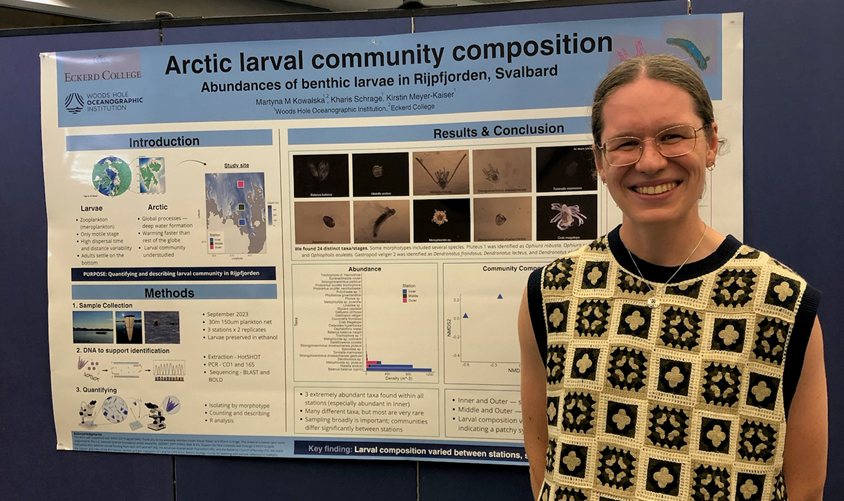Rijpfjorden
The best part of my job is seeing the scientists in my group succeed. This week, I had the chance to cheer on one of our own - my lab's Summer Student Fellow, Marty.
 |
| A satellite photo of the fjord Marty worked on this summer, Rijpfjorden. You can see the gradient in sediment load and ocean color from the fjord head to its open-ocean mouth. Credit: TopoSvalbard. |
Most Svalbard fjords have a gradient of environmental conditions. Large tidewater glaciers calve off icebergs and melt at the head of the fjord. Cold, low-salinity meltwater forms a lens on the surface of the inner fjord. Small grains of sediment that were trapped in the ice are released, making the water dark and turbid. Inorganic glacial sediment rains down on the seafloor, smothering some animals and clogging others. The inner fjord is a difficult place to live.
Going from the head of a fjord to its outermost region is a study in contrasts. The outer part of most Svalbard fjords is exposed to the open ocean. The water is clear and sediment-free. Oceanographic currents bring water from lower latitudes, and waves form complex patterns in the rocky mouth of the bay.
The environmental gradients in fjords are coupled with gradients in the seafloor communities. Close to the fjord head and its glacier, there is very little biodiversity - basically only a few scavengers can live in that challenging environment. As you go out to the mouth of a fjord, species richness gets higher, and so does functional diversity. There are scavengers and filter-feeders and deposit feeders; animals that crawl on the sediment and swim through the water and just sit in one place on a rock. All forms of life can survive in the outer fjord.
 |
| Marty with her poster |
Marty has found some pretty amazing animals in her samples. Tiny swimming worms with fleshy palps on their heads. Clear, egg-shaped shells that will grow up to be sea slugs. Spiky, Sputnik-shaped pluteus larvae. Teeny, tiny clams. And a crab megalopa, almost big enough to see with the naked eye. She has sorted and counted and identified them all.
So far, it looks like there's a pretty strong gradient in the larval community. The inner fjord and outer fjord stations are a world apart, with the mid-fjord station being a mix of the two. It seems that even in the very early part of their life-cycle, seafloor invertebrates are impacted by the shifting environment.
I am very proud of Marty and the great work she has done this summer!
Comments
Post a Comment